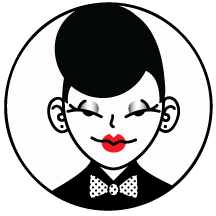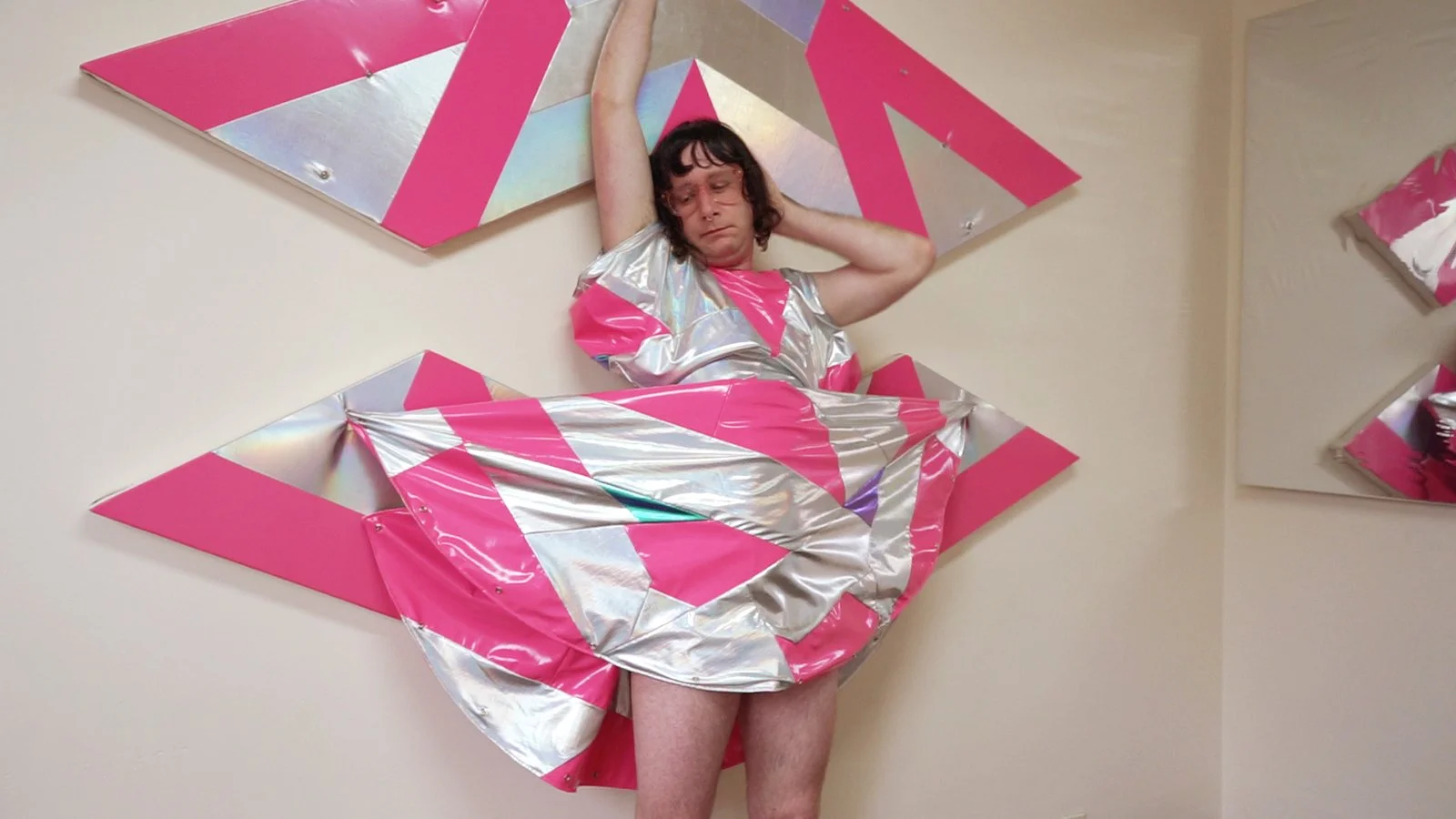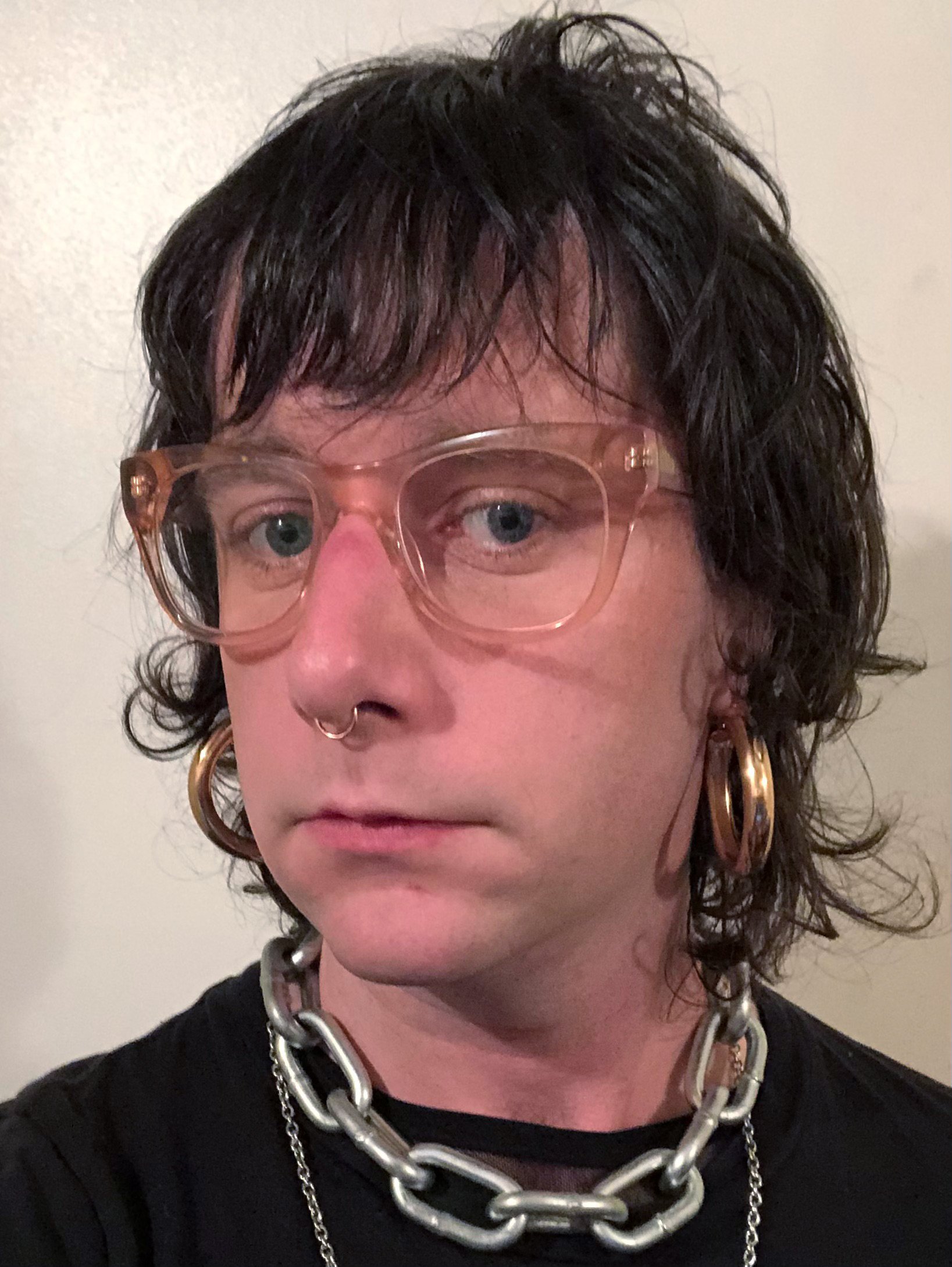my formfits
nick van zanten
When at age 18 I left Evanston, Illinois, just outside Chicago, to go to art school in New York, I didn’t expect that I’d ever return. So years later when, feeling stuck in my art and my life, I applied to MFA programs, I was ambivalent to find that the only one that would take me was in Chicago. Convinced though I was that graduate school would be the change I needed, I was still afraid to move back. I eventually decided to go under the premise that returning to my hometown was how I would discover what it was that felt so wrong. I would take a little trip to Chicago to rectify myself so that I could come back to New York able and ready to really live. I thought of it at times as a pupation, as in how a caterpillar becomes a butterfly.
It took the better part of a decade but I actually managed to do it, or at least to start. I didn’t know consciously at the time that what I needed to do was come out as bi, kinky, and trans nonbinary. At some level, not even all that deep, I knew I was all those things, but at the time I’d thought I’d keep on pretending not to be forever. I’d been making bad art, and wrecking relationships and friendships and just generally being unhappy in New York because I’d been committed, since my teenage years, to closetting myself in almost every way that mattered, and nearly everything that I did was a lie told in service to that. The art that I applied with - which was well enough received to get me waitlisted at some fancy schools - was all about taking something and painstakingly making it look like it was something it wasn’t. Packing peanuts that are cement instead of styrofoam, that sort of thing. They must’ve seen promise in my winking at them, but worried, not unreasonably, that I was too timid to fulfill it. Over the course of my time in Chicago, though, I grew to be more honest with myself and in my art. Coming, as it did, from a place of sly reference it provided me with a way to slowly, sheepishly introduce the real me to myself and to the world, and to imagine and experience myself as I really wanted to live.
Still from documentation of a performance of Dress Up (Formfit XVI/Pink Dress). The artist, a white non-binary person with straight dark brown hair and translucent pink glasses, is posed wearing a holographic silver and hot pink patchwork dress in front of a matching backdrop on the wall, shaped like two chevrons mirroring each other, made of the same fabric. Along the hem of the dress and in a circle on the wall piece are snaps, and the hem of the dress has been snapped to the lower half of the wall piece. The fabric at the hem strains and pulls on the fabric on the wall on either side of the artist, pulling the skirt tight against their body as they perform wearing the piece and caressing it, their eyes closed, holding the back of their head with their left hand and extending their right arm out of the frame above their head. Photo courtesy of Shir Ende.
Still from documentation of a performance of Substrate (Formfit XX). The artist stands in a sparse, brightly lit carpeted room wearing a complex dress made of white and iridescent fabric, which varies from violet to yellow. The sleeves of the dress are rather bags that almost resemble wings, with the wearer’s hands trapped inside. Attached to the dress at various points, including the throat and front of the hem, are a number of matching straps which arc across the room to attachment points on surrounding walls. The artist is holding their head back, tilted a bit to the right side, and looking off into the distance, their right foot forward in a leaning contrapposto pose. Photo courtesy of M.M.M.
I started sewing right around the time that I moved, teaching myself through YouTube videos and with help from my mom and some friends who worked in fashion. I admired Leeza Meksin’s fiber work, and she inspired me and told me where to shop. I was lucky enough to live across the street from a store - Discount Textile Outlet, in Pilsen, Chicago - that had an irresistible selection of loud, garish fabrics. Not even knowing what to do with them I loaded up on shiny and iridescent lycras and vinyls. I began with underwear made out of woodprint spandex, then moved onto leggings and skirts. Despite being in an MFA program my art wasn’t nearly as exciting, so I started folding the clothes I was making into my paintings, making them partially wearable. I called these pieces Formfits, which worked on many levels but also happened to be the name of the lingerie company that had originally occupied the building my graduate program was in. A formfit comprised a garment, which I might wear, and an abstract construction sewn of the same fabric which would receive the garment when unworn and hold it on the wall to be displayed. They were couched in language of potential, and contingency, but also privacy and exclusivity - if I wore the piece, it would come apart, and so it couldn't all be seen at once. They pointed towards my gender nonconformity without my actually living it. As time went on I became more confident and my personal fashion began to follow what I was doing with my Formfits, becoming more genderqueer. Sewing was incredibly freeing to me because I could wear vinyl skirts without having to worry about sizing or shopping in person and having to brave the women’s section while being read as a man. In time I shaved my beard, grew out my hair, and started using they/them pronouns, and with each of these little steps became happier with myself until gradually something had fundamentally changed inside me, and I became aware of a sort of comfort with myself that I’d never realized I could feel so continuously and publicly.
Documentation of The Parental (Formfit XXIV) as worn. The artist stands wearing a short skirt and cropped hooded top. Their arms are at the side, resting in front of their body, as they tilt their head slightly to the right and look at the camera. The skirt is orange at its hem, then green, with a baby pink waist band. The top is a kaleidoscopic mix of orange and green, with cyan and baby pink vinyl bands crossing their body. The hood is ringed in baby pink vinyl. The sleeves don’t open, but end in pink straps which are buckled to cyan straps that come out from the front of the collar. The fabric is covered in collaged images of fabric and skin.
My final Chicago Formfit, no. 24, is alternatively titled The Parental, and served as a sort of culmination of my whole time in Chicago, completed just before I left. It was as explicitly about being trans as I could get at that moment (having already made artwork incorporating dresses, bralettes, and skirts), and was designed to be shown in my childhood bedroom in Evanston. In late 2021 my parents left town for three months, giving me access to the house I grew up in without their presence - something I’d never had except for one time in high school, when I tried to have a party and somehow both failed and had the cops called. When I’d been debating moving back to Chicago friends had told me about the DIY gallery scene there, where people would have art shows in their garage, or on a telephone pole, and I had thought it would be fun to run a gallery (the Parental) out of my childhood bedroom in an iconic middle-class suburb where John Hughes movies had been filmed. My parents, however, had quashed the idea. When they left town I had already decided I was returning to New York in a few months, but the idea came back to me, though now it would only be a single piece, with the room retaining the few traces of my childhood that remained, rather than becoming a bare white cube. I still wasn’t sure what to make for the room, but after much deliberation I gave in to the memories of the meditations that I’d had in that room long ago, and the desires that I had felt while living there and for so long suppressed and denied.
I sewed a padded bra and gaff out of pastel pink and blue velvet, made matching bedsheets, and photographed myself on my childhood bed. I then edited the photos to fit my garment patterns, dropping out cyan in some parts and magenta in others, and sewed a short circle skirt and hooded straightjacket out of them. Wearing these and with new vinyl bedding I shot more photos in my room, which I used to make a fabric-covered foam support on which the clothes could be displayed. The top and the mannequin had straps and buckles, allowing my arms to be held tight around my sides and the square mannequin to fold up, like a taco, and so hold the skirt and top. The straps also connected with attachment points that I installed in my old bedroom, so that the whole piece could hang there. About a month before leaving town I installed it, documented it, and showed it to my mom and dad. I had to pack it up after, because it isn’t my room, and hasn’t been for years. Now it hangs in my studio, a reminder of how far I’ve come, and a nice fit to put on when someone comes by and can help me with the buckles.
Documentation of the hanging support, or mannequin, for The Parental (Formfit XXIV). It is a peach, magenta, and pale green cushion, squeezed horizontally into a shape resembling a taco seen from above. Blue straps criss-cross the inside face of the cushion, and extend out of frame to the top and bottom, in tension. Blue straps also wrap many times around it, compressing and holding it in this rounded position, fixed by a magenta buckle. The fabric is again covered in collaged images of fabric and skin.
Later that year, when having a serious talk about my being nonbinary, my mom raised a question: what would my art be about now? For so long it had been my way of exploring gender nonconformity without quite committing to being nonbinary. If I were to simply accept myself and live this way my art would have to change dramatically. The Formfits were how I finally found a way to indulge in dresses that folded my arms up at my shoulders and left me helpless. But at the same time, they were premised on there being a boundary between me and my art. By making these clothes as art I’d gotten to try them on, but I also kept myself from wearing them out into the street. I’d done it in part because I felt alone, and that it was the only way I could do what I wanted, but now that I was finding a community of people like me it didn’t have to be my only outlet. All along my art practice had been a reflection of my life, and had gone from being a reflection of my self-denial to a tool that I used to embrace my true spirit. It wasn’t that she thought I’d have nothing to make, just that what I was making would have to be different once I accepted myself and began to live a life that was an actualization of the one I’d tried out in my artwork.
And my art has changed; my purpose in making it has shifted because what I’d captured in it isn’t solely confined to it anymore. I’m still making clothes for myself, many of them with bondage in mind, quite a few of them dresses, but for now I’ve stopped making supports to display them on. Instead of being too precious to wear and sticking them on a wall in a gallery, I’m hanging them in my closet when I’m not wearing them to other people’s art openings. I get a lot more satisfaction out of them now. It isn’t that I didn’t want to do this before, but that I wasn’t ready. I’m past hiding who I am and I don’t need to stand aside from my work as it hangs behind on the wall. My work is me and I can be in it and take it wherever I go. My transness isn’t abstract or contingent - it never really was - and so neither is my art. Rather it is a crucial part of my ongoing self-creation and fulfillment as the trans person I was all along but was too afraid to admit to being. My practice must and will change, as will I, but only for better. It helped me get to where I am now, but I still have a long way yet to go, and a lot more garments to not only make but to wear out, and wear out.
Documentation of Formfit XXV, a newer piece as worn. The artist is taking a photo, holding their phone in their right hand, standing in their studio in front of a mirror wearing a shimmery green nylon tube top full-length skirt. Across the outfit at various angles are stripes of navy blue, and it is cinched across the breasts, waist, thighs, and knees with straps, creating a cacophony of drapery with straps falling off the side to the right of the skirt and in the center of the top. A zipper runs down the middle of the top, which only covers their breasts, and it is unzipped about an inch. Their left arm is bent with their hand behind their back, their head tilted to the right as they look at the camera lens. A low table is to the left behind them and a higher one to the right, with a stool beside it. Both are covered in ephemera. The floor is bluish gray concrete, the walls white. This is actually Chris Daharsh’s studio, which they sublet at the time.
about the creator
A white non-binary person with blue eyes and messy, wavy medium-length dark brown hair, large, round glasses with translucent pink frame, gold septum ring and thick gold hoop earrings, wearing two chains and a black shirt, looking moody.
Nick Van Zanten (they/them) is a non-binary artist born in Chicago and now based in Brooklyn. They received their BFA from Pratt Institute and their MFA from the University of Illinois at Chicago. Their work has been shown throughout the United States, and been written about in Art in America.






